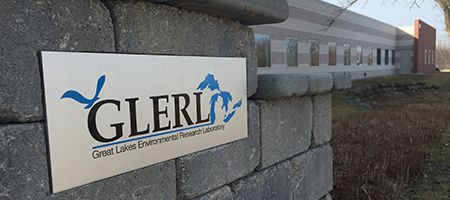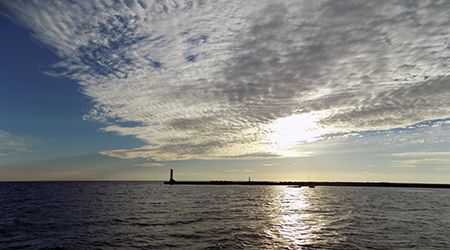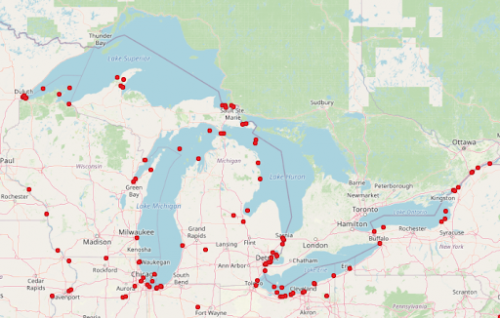NOAA Changes in the Great Lakes
NOAA’s Great Lakes Environmental Research Laboratory (GLERL) in Ann Arbor, Michigan is a center of research for ecological dynamics, integrated physical and ecological modeling and forecasting, and scientific observing and technology, specifically for the Great Lakes.
The GLERL facility has a close relationship with the new U.S. Coast Guard National Center of Expertise—a research and teaching facility that opened in August 2022 at Lake Superior State University in Sault Ste. Marie, Michigan. Together, the two facilities will serve as the hub for the Great Lakes research, observing, and modeling for oil spills in freshwater environments.
GLERL recently became the base for the NOAA scientific support coordinator (SSC) for the Great Lakes—which is a great fit. All of NOAA’s Great Lakes science is coordinated through this facility, which provides a focus for NOAA’s environmental and ecosystem research in the region and coastal marine environments.

“The NOAA SSCs are part of a greater NOAA team. Moving the Great Lakes SSC from the federal building in Cleveland to the GLERL in Ann Arbor allows that person to easily bring together NOAA research and services, such as weather, emerging technologies, harmful algal blooms, invasive species, water levels, as well as products from other groups who have connections through GLERL. Overall, the GLERL location will give NOAA better reachback with local experts on the Great Lakes,” said Doug Helton, regional operations supervisor for OR&R’s Emergency Response Division.
NOAA SSCs have broad and varied responsibilities. Among them, they serve as natural resource trustees after an oil spill or other disaster, primarily in the emergency response phase but also through the restoration and recovery processes. They assist with modeling of oil spills to estimate the transport and fate of spills on the water; identify the resources at risk in an affected area; conduct aerial observations of oil on the water; oversee shoreline assessments; evaluate clean-up strategies to obtain the best possible outcome; and analyze pollutant chemistry and environmental effects. They also manage large quantities of spill and response data, and train other emergency responders.
To do all of this, they must coordinate with numerous other agencies and groups. Within NOAA, they need to coordinate with: the National Weather Service, when estimating the movement of oil, or being aware of weather conditions during response and clean-up; NOAA Fisheries, in managing the safety of seafood for commercial, recreational, or subsistence fishing; NOAA's National Environmental Satellite, Data, and Information Service, in the interpretation of satellite imagery; NOAA Coast Survey's navigation response teams, in detecting and identifying hazards to navigation; etc. They also must coordinate externally, with other federal, state, tribal, and local governments, the oil/gas industry, and academia.
The change in SSC location coincides with an officer rotation for the SSC assigned to the Great Lakes. Lt. Cmdr. Chris Duffy assumed this role from Lt. Cmdr. Rachel Pryor beginning in January 2023. Duffy will be the first NOAA SSC to be located at the GLERL.
Because there is much coordination needed to prepare and introduce an incoming SSC, it is important, whenever possible, that there is overlap to help with introductions to the stakeholders of their new area of responsibility.
At the Great Lakes “No Spills” Conference and the Northern Michigan Area Committee meeting in Traverse City, Michigan on Feb. 16, they had the opportunity to meet oil spill response organizations, local emergency managers, EPA on-scene coordinators, Michigan state responders, and representatives from U.S. Coast Guard (USCG) Sector Sault Ste. Marie and the USCG Great Lakes Oil Spill Center of Expertise. Lt. Cmdr. Pryor gave a presentation about NOAA’s Environmental Sensitivity Index maps to the diverse audience.
Additionally, they have traveled to meet with NOAA staff and stakeholders in the region, including visits to USCG Sector Lake Michigan in Milwaukee, Wisconsin and USCG District 9 in Cleveland, where they met with USCG response personnel and leadership.
As the two SSCs finalize the formal handoff, they can both be reached at the 24/7 response cell phone 202.557.6801 and email ssc.greatlakes@noaa.gov.
 An official website of the United States government.
An official website of the United States government. 

